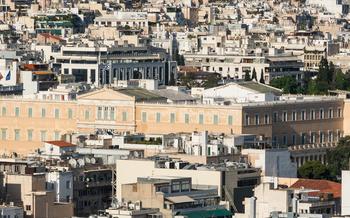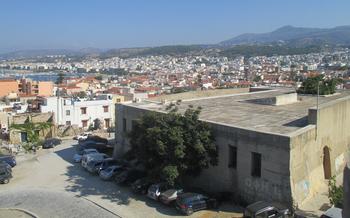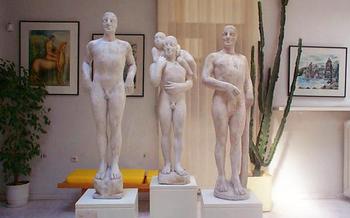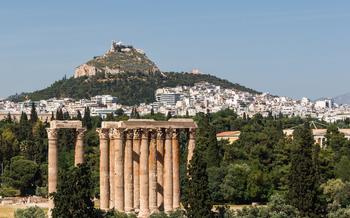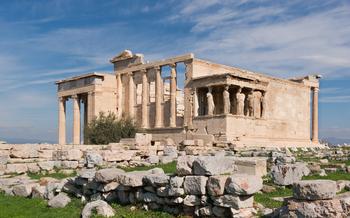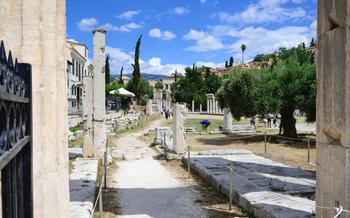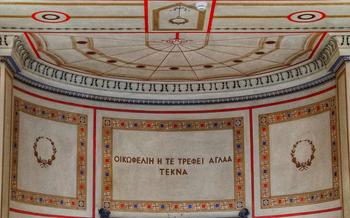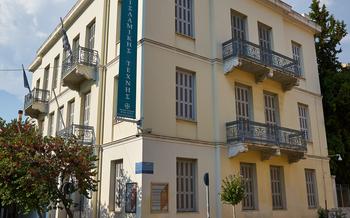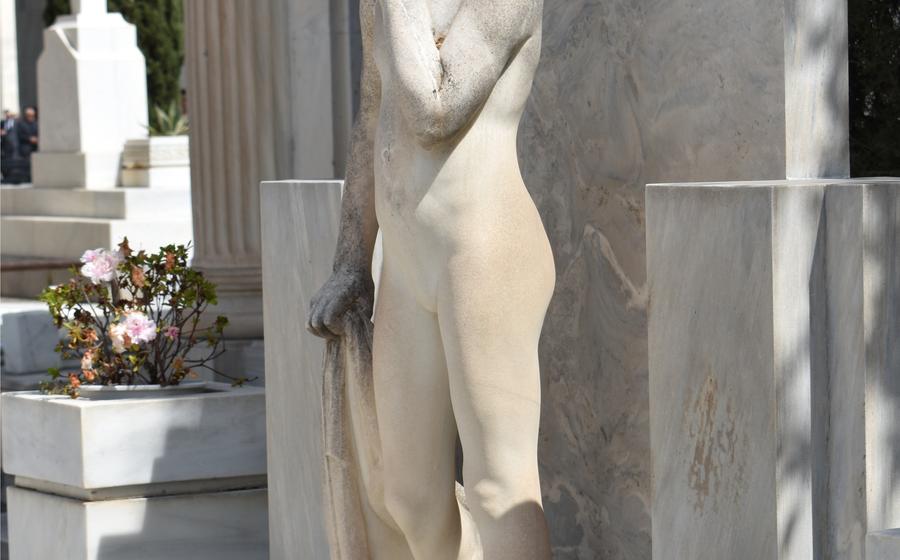
First Cemetery of Athens
- First Cemetery of Athens: A Historic Overview
- Location and Accessibility:
- Operating Hours and Admission
- Guided Tours and Audio Guides
- Monuments and Notable Graves
- Notable Monuments and Structures
- Cultural and Historical Significance
- Artistic and Architectural Elements
- Restoring and Preserving History
- Tips for Visitors
- Nearby Attractions:
- Seasonal Considerations:
- Accessibility for Visitors with Disabilities
- Educational Opportunities: A Journey Through History and Culture
- Insider Tip: Hidden Gems
First Cemetery of Athens: A Historic Overview
Established in 1837, the First Cemetery of Athens, also known as the Old Cemetery, holds a significant place in the history of the Greek capital. Before its establishment, burials took place in churches or monasteries, often leading to overcrowding and health concerns. The decision to create a designated cemetery outside the city walls marked a turning point in Athenian urban planning and public health.
The cemetery's layout and design were carefully planned, with wide avenues and distinct sections for different religious communities, including Orthodox Christians, Catholics, Protestants, and Jews. It became the final resting place for many notable figures who contributed to Greece's history, politics, arts, and culture. Among them are prominent politicians like Charilaos Tricoupis and Eleftherios Venizelos, renowned poets like Konstantinos Kavafis and Andreas Kalvos, and celebrated artists such as Nikiforos Lytras and Yannis Moralis.
The First Cemetery of Athens is not only a repository of history but also a treasure trove of architectural and artistic wonders. The tombs and mausoleums showcase an array of architectural styles, from classical to neoclassical, Byzantine to Art Deco. Visitors can admire the intricate carvings, sculptures, and inscriptions that adorn the resting places of Athens' most illustrious citizens.
Location and Accessibility:
The First Cemetery of Athens is conveniently situated in the heart of the city, within walking distance from several major landmarks. Its exact address is 288, Leoforos Alexandras, Athens 115 2To reach the cemetery by public transportation, take the metro (subway) to the "Ambelokipi" station on Line 3 (blue line). From there, it's a short walk to the cemetery's main entrance. Alternatively, several bus lines stop within a few minutes' walk from the cemetery. For those driving, limited street parking is available in the surrounding area. However, it's advisable to consider using public transportation or ride-sharing services to avoid the hassle of finding parking.
Operating Hours and Admission
The First Cemetery of Athens is open to visitors daily, inviting you to explore its rich history and captivating stories. Embark on a journey through time as you stroll amidst the grand monuments and humble graves that narrate the lives of those who shaped the city's legacy.
Opening and Closing Times:
The cemetery's gates swing open from dawn to dusk, welcoming visitors to delve into its serene atmosphere throughout the day. However, the specific hours of operation may vary slightly depending on the season and daylight conditions. It's always advisable to check with local sources or the cemetery's official website for the most up-to-date information.
Admission Fees:
The First Cemetery of Athens stands as a testament to the city's cultural heritage, free and accessible to all. Visitors are not required to pay any admission fees to wander through its hallowed grounds and discover the fascinating stories that lie within.
Special Hours or Closures:
While the cemetery generally remains open to the public, there might be occasional closures or special hours to accommodate specific events, maintenance activities, or holidays. To avoid any inconvenience, it's worth checking in advance for any potential disruptions or changes in the cemetery's schedule.
Guided Tours and Audio Guides
The First Cemetery of Athens offers guided tours for those who want to delve deeper into its history and significance. These tours are led by knowledgeable guides who provide insightful commentary on the cemetery's monuments, notable graves, and historical context. Tours are available in various languages, including English, French, German, and Greek, catering to international visitors.
For those who prefer a self-guided experience, audio guides are available in multiple languages. These audio guides offer a personalized tour, allowing visitors to explore the cemetery at their own pace while listening to informative narrations about the various monuments and personalities. Visitors can rent audio guides from the cemetery's administration office.
Guided tours and audio guides provide an enriching experience for visitors, helping them understand the historical, cultural, and artistic significance of the First Cemetery of Athens. Whether led by a knowledgeable guide or explored independently with an audio guide, these tours offer a deeper appreciation for the stories and legacies that reside within this hallowed ground.
Monuments and Notable Graves
The First Cemetery of Athens is the final resting place of numerous prominent figures from Greece's history, culture, and politics. Among the most famous gravesites, visitors can pay their respects to:
-
Andreas Papandreou: A former prime minister of Greece and a leading figure in the country's modern political landscape. His grave is marked by a simple but dignified white marble headstone.
-
Eleftherios Venizelos: Another former prime minister and a key player in Greece's struggle for independence from the Ottoman Empire. His grand mausoleum, adorned with intricate carvings and sculptures, is one of the most impressive sights in the cemetery.
-
Constantine Karamanlis: Another former prime minister and a prominent figure in post-war Greek politics. His grave is marked by a large white cross and a bust of the statesman.
-
Melina Mercouri: A renowned actress, singer, and politician who served as Greece's Minister of Culture. Her grave is marked by a simple headstone with the inscription "Melina" in Greek.
-
Yannis Ritsos: One of Greece's most celebrated poets, known for his poignant and evocative verses. His grave is marked by a simple headstone with a bronze bust of the poet.
-
Maria Callas: The legendary opera singer, who was born in New York City to Greek parents, is buried in the First Cemetery of Athens alongside her mother. Her grave is marked by a simple white marble headstone.
Notable Monuments and Structures
Within the First Cemetery of Athens, several notable monuments and structures stand as testaments to the city's rich history and artistic heritage. The chapel of Agios Lazaros, a small Byzantine church located near the entrance, holds a significant place in the cemetery's narrative. Built in the 11th century, it exudes a sense of tranquility and spirituality, its whitewashed walls adorned with intricate frescoes depicting scenes from the life of Saint Lazarus.
Monuments dedicated to historical events or individuals are scattered throughout the cemetery, paying homage to those who have shaped Athens's past. The Monument to the Fallen of the War of Independence, erected in 1870, stands as a tribute to the brave men and women who fought for Greece's freedom from Ottoman rule. Its marble pedestal features intricate carvings and bas-reliefs depicting scenes from the conflict, while the names of the fallen soldiers are inscribed on its sides.
Statues and sculptures of note also grace the cemetery grounds, adding an artistic dimension to the serene atmosphere. The marble statue of Thanatos, the Greek personification of death, stands as a poignant reminder of the transience of life. Its haunting beauty and intricate details capture the essence of the cemetery's purpose while serving as a symbol of remembrance and reflection.
Cultural and Historical Significance
The First Cemetery of Athens is not just a resting place for the deceased but also a repository of Athenian history and culture. It offers a glimpse into the lives, achievements, and contributions of prominent individuals who have shaped the city's identity.
One of the most intriguing aspects of the cemetery is the stories and anecdotes associated with the buried individuals. From tales of political intrigue and artistic brilliance to tragic love stories and heroic sacrifices, each grave holds a unique narrative. Visitors can learn about the lives of renowned politicians, military figures, artists, writers, and other notable personalities who have left an indelible mark on Athenian society.
The cemetery also bears witness to significant historical events that have unfolded in Athens. Whether it's the struggle for independence, the rise and fall of political regimes, or the impact of war and conflict, the cemetery offers a tangible connection to the city's past. Visitors can explore memorials dedicated to fallen soldiers, monuments commemorating historical events, and graves of individuals who played a pivotal role in shaping Athens' destiny.
Artistic and Architectural Elements
The First Cemetery of Athens is a treasure trove of artistic and architectural masterpieces that reflect various styles and periods in Greek history. From elaborate neoclassical sculptures to intricate Byzantine mosaics, the cemetery showcases a diverse range of artistic expressions.
One of the most striking features of the cemetery is its collection of marble sculptures. These sculptures, often depicting angels, saints, and other religious figures, are exquisitely crafted and add a touch of grandeur to the cemetery's serene atmosphere. Visitors can also admire the intricate carvings on the tombstones, which feature a variety of motifs, including flowers, animals, and biblical scenes.
The cemetery is also home to several notable works of art. The most famous of these is the sculpture of Thanatos, the Greek personification of death, by the renowned Danish sculptor Thorvaldsen. This poignant sculpture depicts Thanatos as a winged figure gently extinguishing a torch, symbolizing the end of life.
The Chapel of Agios Lazaros, located within the cemetery, is another architectural highlight. This small, domed chapel is decorated with beautiful frescoes and mosaics that depict scenes from the life of Jesus Christ. The chapel's interior is a testament to the artistic skills of the Byzantine craftsmen who created it.
Overall, the First Cemetery of Athens is a testament to the artistic and architectural heritage of Greece. Its diverse collection of sculptures, carvings, and paintings makes it a must-visit destination for anyone interested in art, history, and culture.
Restoring and Preserving History
The First Cemetery of Athens, with its rich history and cultural significance, has undergone significant conservation efforts to preserve its heritage. Restoration projects have been initiated to safeguard the cemetery's architectural elements, sculptures, and tombstones. Skilled artisans and conservators have meticulously worked to restore damaged structures, clean and repair sculptures, and preserve the intricate details of the tombstones.
The challenges in preserving the cemetery are immense, as time and environmental factors take their toll on the delicate materials. The restoration process requires expertise in various fields, including architecture, art conservation, and historical research. Balancing the need for preservation with respect for the original design and integrity of the cemetery is paramount.
Preserving historical cemeteries like the First Cemetery of Athens is crucial for several reasons. These cemeteries are valuable repositories of history, providing insights into the lives, culture, and traditions of past generations. They serve as outdoor museums, allowing visitors to learn about the city's history and pay their respects to notable figures who shaped its destiny. Moreover, these cemeteries are tranquil spaces that offer solace and reflection, reminding us of the interconnectedness of life and death.
Tips for Visitors
When visiting the First Cemetery of Athens, it's important to be respectful of the site's significance and the privacy of those mourning or paying their respects. Appropriate attire and behavior are expected, including avoiding loud noises or disruptive activities. Photography is generally permitted, but it's essential to be mindful of the privacy of others and to refrain from taking intrusive or disrespectful photographs, particularly near gravesites. Visitors should also be aware that some areas of the cemetery may be closed for restoration or maintenance purposes.
Nearby Attractions:
The First Cemetery of Athens is situated in a vibrant neighborhood brimming with historical and cultural landmarks. A short stroll from the cemetery's gates, visitors can delve into the captivating history of Athens at the Archaeological Museum of Kerameikos, which houses an impressive collection of artifacts unearthed from the ancient Kerameikos cemetery.
For those seeking a serene escape amidst the bustling city, the Alsos Kerameikou Park offers a tranquil oasis with lush greenery, meandering paths, and a picturesque pond. It's an ideal spot to unwind, enjoy a picnic, or simply admire the beauty of nature.
Art enthusiasts can immerse themselves in the vibrant contemporary art scene at the Athens School of Fine Arts, located just a stone's throw from the cemetery. The school's galleries showcase a diverse range of exhibitions, featuring works by both established and emerging artists.
To delve deeper into the rich history of Athens, visitors can explore the Hellenic Motor Museum, which boasts a fascinating collection of vintage cars and motorcycles that trace the evolution of transportation in Greece.
Seasonal Considerations:
The First Cemetery of Athens is a year-round destination, but the best time to visit is during the spring or fall, when the weather is mild and pleasant. During these seasons, visitors can comfortably explore the cemetery's grounds without having to worry about extreme heat or cold.
In the summer months, temperatures in Athens can soar, making it uncomfortable to spend extended periods outdoors. Visitors should consider visiting the cemetery early in the morning or late in the afternoon to avoid the hottest part of the day. It's also important to stay hydrated and wear sunscreen when visiting during the summer.
The winter months in Athens are generally mild, with temperatures rarely dropping below freezing. However, occasional rainfall can make the cemetery's grounds slippery and muddy. Visitors should wear appropriate footwear and be prepared for wet weather conditions.
Regardless of the time of year, it's always a good idea to check the weather forecast before visiting the First Cemetery of Athens. This will help you plan your visit accordingly and make the most of your time there.
Accessibility for Visitors with Disabilities
The First Cemetery of Athens recognizes the importance of accessibility for all visitors, including those with disabilities. To ensure an inclusive experience, the cemetery has made efforts to provide accessibility features that cater to their needs. Ramps and elevators are strategically placed throughout the grounds to facilitate ease of movement, allowing visitors to navigate the cemetery's paths and monuments without barriers. Designated parking spaces are reserved near the entrances, ensuring convenient access for visitors with disabilities. Additionally, assistance is readily available for those who may require it. Staff members are trained to be attentive and supportive, offering guidance and assistance to ensure a smooth and enjoyable visit for all. The commitment to accessibility reflects the cemetery's dedication to creating a welcoming and inclusive environment for visitors from all backgrounds.
Educational Opportunities: A Journey Through History and Culture
The First Cemetery of Athens offers a wealth of opportunities for educational exploration and learning. School programs and educational initiatives are available, providing students with an immersive experience into the history and cultural significance of the cemetery. Workshops and lectures delve deeper into specific aspects of the necropolis, shedding light on its unique stories and symbolism.
For researchers and students, the cemetery serves as a valuable resource for studying Athenian history and funerary practices. Access to historical documents, maps, and records allows for in-depth research and exploration of the lives and legacies of those buried within the cemetery walls. Whether it's a class project, a research paper, or a personal quest for knowledge, the First Cemetery of Athens offers a rich tapestry of history and culture waiting to be discovered.
Insider Tip: Hidden Gems
Within the vast expanse of the First Cemetery of Athens, there lies a hidden gem that beckons the curious and the passionate. Tucked away in a secluded corner, amidst towering cypress trees and intricate tombstones, stands the grave of a remarkable woman who left an enduring mark on Greek history. Her name was Sophia Laskaridou, and her life was a testament to courage, resilience, and unwavering devotion to her country.
As you approach her final resting place, you'll be struck by the simplicity of her tombstone. No grand mausoleum or elaborate sculptures adorn her grave, but the inscription tells a tale that resonates through the ages. It speaks of her unwavering love for Greece and her tireless efforts to secure its independence during the tumultuous years of Ottoman rule.
Sophia Laskaridou was a true pioneer, a fearless fighter who defied convention and challenged the status quo. She was among the first women to join the struggle for Greek liberation, risking her life to smuggle weapons and messages between Greece and its allies. Her unwavering dedication and selfless acts earned her the admiration and respect of her compatriots, who hailed her as a heroine.
Today, Sophia Laskaridou's grave stands as a symbol of the indomitable spirit of the Greek people. It's a place where history whispers, where the echoes of past struggles and triumphs linger in the air. As you pay your respects to this extraordinary woman, let her story inspire you to embrace your own passions and to fight for what you believe in.
